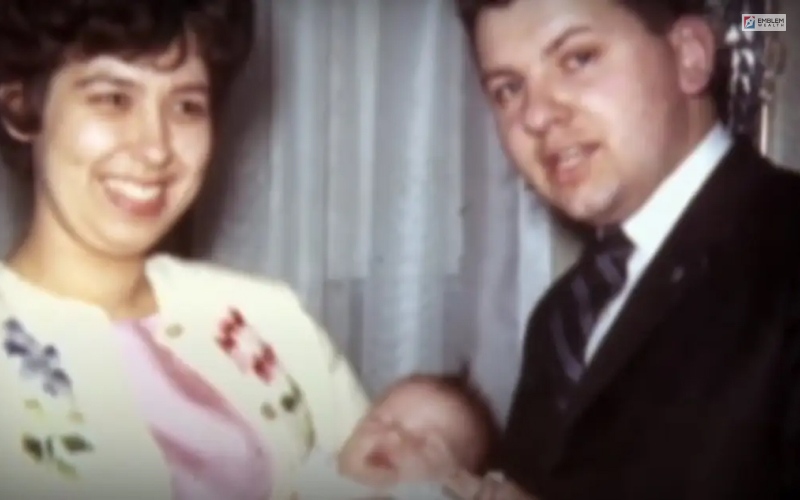Michael Gacy is one of the most infamous serial killers in American history, known for his chilling alter ego as the "Killer Clown." His story has captivated and horrified audiences worldwide, becoming a chilling reminder of the darkness that can lurk beneath a seemingly ordinary exterior. The details of his life and crimes continue to intrigue true crime enthusiasts and psychologists alike, offering insights into the mind of a psychopath. This article delves into the life, crimes, and legacy of Michael Gacy, exploring the factors that led to his downfall and the impact he left on society.
Throughout history, there have been numerous cases of serial killers whose actions have left an indelible mark on society. Among them, Michael Gacy stands out as a particularly disturbing figure. His ability to charm and deceive those around him while committing heinous acts makes his story even more haunting. Understanding his background and motivations is crucial in comprehending the depths of human depravity.
As we explore the life of Michael Gacy, it is important to recognize the broader implications of his actions. His case highlights the importance of mental health awareness, criminal psychology, and the need for vigilance within communities. By examining his story, we can gain a deeper understanding of how such tragedies occur and what can be done to prevent them in the future.
Biography of Michael Gacy
Early Life and Personal Details
Michael Gacy was born on March 17, 1942, in Chicago, Illinois. From a young age, he exhibited signs of behavioral issues that would later manifest in his adult life. Below is a summary of his personal details:
| Full Name | Michael Anthony Gacy Jr. |
|---|---|
| Date of Birth | March 17, 1942 |
| Place of Birth | Chicago, Illinois, USA |
| Occupation | Contractor, Entertainer (as "Pogo the Clown") |
| Alias | Killer Clown |
| Date of Death | May 10, 1994 (Executed by lethal injection) |
Michael Gacy's Personality and Behavior
Gacy grew up in a strict household with an abusive father who often belittled him. This environment likely contributed to his psychological development and the formation of his personality. As he matured, Gacy became a charismatic figure in his community, often hosting parties and events where he entertained children as "Pogo the Clown." However, beneath this façade lay a darker side that would eventually come to light.
- Gacy's father was emotionally and physically abusive, which may have influenced his behavior later in life.
- He struggled with mental health issues, including a brain injury sustained during his teenage years.
- Gacy's charming exterior masked his violent tendencies, allowing him to evade suspicion for years.
Michael Gacy's Crimes
The Dark Side of Pogo the Clown
Despite his public persona as a beloved entertainer, Michael Gacy's private life was marked by a series of brutal murders. Between 1972 and 1978, he murdered at least 33 young men and boys, making him one of the most prolific serial killers in U.S. history. His victims were often lured to his home under false pretenses, where they were subjected to unspeakable atrocities.
Methods of Operation
Gacy's modus operandi involved targeting vulnerable individuals, often young men and boys who were struggling financially or socially. He would offer them jobs or housing, only to exploit and ultimately murder them. His crimes were meticulously planned, and he took great care to dispose of the bodies in ways that would delay discovery.
- Gacy buried the majority of his victims beneath his home, making it one of the largest crime scenes in U.S. history.
- He often disposed of bodies in the Des Plaines River, further complicating efforts to identify his victims.
- Gacy's use of restraints and gagging devices was a recurring theme in his murders.
Investigation and Arrest
Uncovering the Truth
The investigation into Michael Gacy's crimes began in December 1978 when one of his victims, Robert Piest, went missing. His disappearance led police to Gacy's home, where they discovered the remains of several victims buried in the crawl space beneath the house. The discovery of these bodies marked the beginning of a massive forensic investigation that would ultimately uncover the extent of Gacy's atrocities.
Challenges Faced by Investigators
Law enforcement faced numerous challenges during the investigation, including the need to identify and locate missing persons who might have been victims. The sheer number of bodies discovered at Gacy's home required extensive resources and coordination between multiple agencies.
- Investigators had to sift through tons of soil to recover remains buried beneath the house.
- Identifying the victims was a painstaking process that involved dental records and other forensic techniques.
- Public awareness campaigns were launched to help locate missing persons who might have been victims.
Psychological Analysis of Michael Gacy
Understanding the Mind of a Serial Killer
Psychologists and criminologists have long sought to understand the motivations behind serial killers like Michael Gacy. His ability to lead a double life, charming those around him while committing heinous acts, highlights the complexity of his personality. Experts believe that a combination of environmental factors, such as childhood trauma, and potential neurological issues may have contributed to his behavior.
Diagnosing Gacy's Mental Health
During his trial, Gacy's defense team attempted to argue that he suffered from a mental illness that impaired his judgment. However, this defense was ultimately unsuccessful, as evidence of his premeditated actions and careful planning contradicted claims of diminished capacity.
- Gacy exhibited traits consistent with antisocial personality disorder, including a lack of empathy and disregard for the rights of others.
- His ability to maintain a public persona while committing atrocities suggests a high level of cognitive functioning.
- Experts believe that Gacy's violent tendencies were likely influenced by both genetic and environmental factors.
The Trial and Conviction
Michael Gacy's Legal Battle
Gacy's trial began in February 1980, capturing the attention of the nation. The prosecution presented overwhelming evidence of his guilt, including physical evidence, witness testimony, and confessions. Despite his attempts to plead insanity, Gacy was found guilty of 33 counts of murder and sentenced to death.
Public Reaction and Media Coverage
The trial of Michael Gacy was one of the most highly publicized criminal cases of its time. Media coverage brought attention to the issue of serial killings and the need for improved law enforcement practices. The public was both fascinated and horrified by the details of his crimes, leading to increased awareness of the dangers posed by individuals like Gacy.
- Journalists from around the world covered the trial, providing extensive coverage of the proceedings.
- Public opinion was largely divided, with some advocating for the death penalty while others argued for life imprisonment.
- The trial highlighted the importance of forensic science in solving complex criminal cases.
Legacy of Michael Gacy
Impact on Society
The case of Michael Gacy has had a lasting impact on society, influencing changes in law enforcement practices and public awareness. His crimes served as a wake-up call for communities to be more vigilant and for law enforcement to improve their methods of investigation and identification of missing persons.
Cultural References
Gacy's story has been the subject of numerous books, documentaries, and films, ensuring that his legacy endures in popular culture. These portrayals often focus on the duality of his character, exploring the contrast between his public persona and private actions.
- Works such as "The Devil's Advocate" and "Gacy" have brought his story to a wider audience.
- His case is frequently referenced in true crime podcasts and documentaries, serving as a cautionary tale.
- Gacy's image as the "Killer Clown" has become a symbol of the darker side of human nature.
Lessons Learned from the Gacy Case
Improving Law Enforcement Practices
The investigation into Michael Gacy's crimes highlighted the need for improved forensic techniques and better coordination between law enforcement agencies. Advances in DNA analysis and other forensic sciences have since made it easier to solve cases involving missing persons and unidentified remains.
Addressing Mental Health Issues
Gacy's case underscores the importance of addressing mental health issues within society. Early intervention and treatment for individuals exhibiting signs of behavioral problems could potentially prevent future tragedies. Increased awareness and resources for mental health care are essential in addressing these concerns.
- Communities must prioritize mental health education and support for at-risk individuals.
- Law enforcement agencies should receive training in recognizing signs of mental illness and providing appropriate responses.
- Public policy initiatives should focus on reducing the stigma surrounding mental health issues.
Conclusion
Michael Gacy's life and crimes serve as a chilling reminder of the darkness that can exist within human nature. His ability to deceive those around him while committing heinous acts highlights the complexity of the human mind and the importance of vigilance within communities. By examining his case, we can gain valuable insights into the factors that contribute to such tragedies and work toward preventing them in the future.
We encourage readers to share this article and engage in discussions about the implications of Gacy's story. By raising awareness and promoting understanding, we can honor the memory of his victims and strive for a safer, more informed society. For further reading, explore our collection of true crime articles and resources.
Table of Contents
- Biography of Michael Gacy
- Early Life and Personal Details
- Michael Gacy's Personality and Behavior
- Michael Gacy's Crimes
- The Dark Side of Pogo the Clown
- Methods of Operation
- Investigation and Arrest
- Uncovering the Truth
- Challenges Faced by Investigators
- Psychological Analysis of Michael Gacy
- Understanding the Mind of a Serial Killer
- Diagnosing Gacy's Mental Health
- The Trial and Conviction
- Michael Gacy's Legal Battle
- Public Reaction and Media Coverage
- Legacy of Michael Gacy
- Impact on Society
- Cultural References
- Lessons Learned from the Gacy Case
- Improving Law Enforcement Practices
- Addressing Mental Health Issues


